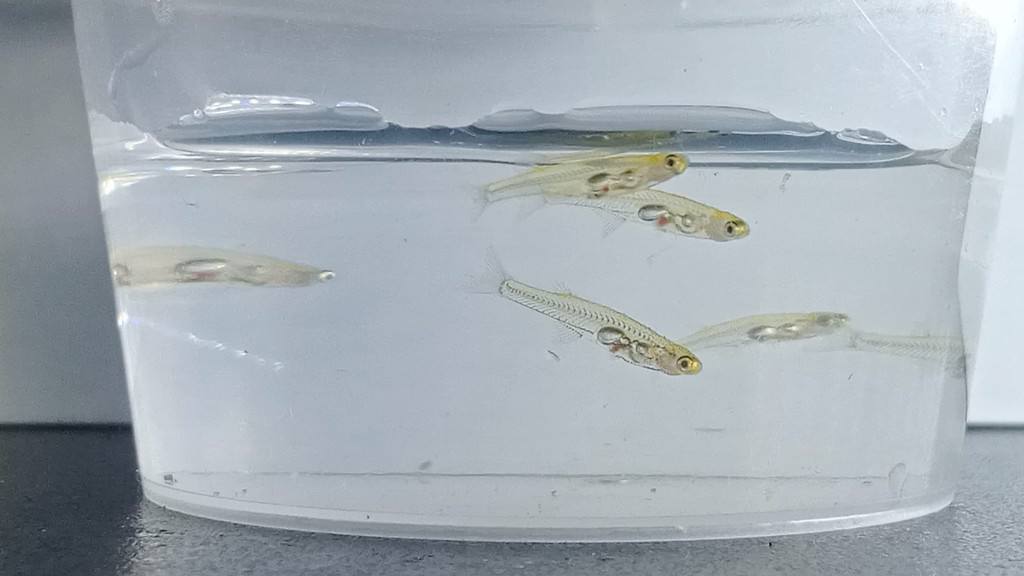
A small fish of barely 12 milimeters produces 140-decibels of sound, the authors of a new study report. That’s as loud as hearing a jet take off nearby. These fascinating fish had to evolve a special apparatus for this type of communication.
Loud animals tend to be big. The blue whale is often mentioned for its powerful calls reaching up to 188 decibels. But the actual loudest animal, the sperm whale, can produce sounds of up to 230 decibels (dB). For comparison, rock concerts are between 90 and 120 dB, and sounds over 85 dB are considered harmful to human hearing.
But not all loud animals are big. For instance, the lesser water boatman (an insect) produces mating calls reaching 99.2 decibels, which is incredibly loud relative to its size. The pistol shrimp can click at over 200 dB — using this acoustic power to stun its prey. But for fish, being loud is extremely unusual.
“Fishes are generally considered to be rather quiet members of the animal kingdom,” explains Dr. Ralf Britz of the Senckenberg Natural History Collections in Dresden. However, there are certain fish species that can be surprisingly loud. For example, the male plainfin midshipman fish attracts its females with an audible vibrato of around 100 hertz and 130 decibels.”
Bladder drum
The noisy fish in question is called Danionella cerebrum, a species discovered relatively recently in 2021. Danionella cerebrum is somewhat similar to the zebra fish, but it is transparent and has the smallest known adult vertebrate brain. It is mostly found in Myanmar and, although only recently discovered, it’s often used as a model organism for research because it’s almost entirely transparent. But its communication is not well understood.
In order to produce this sound, the fish had to evolve multiple components. In particular, it evolved an area of cartilage that it can accelerate at speeds over 2,000 times gravitational acceleration.
How this process works is through muscle contraction and release. When D. cerebrum wants to make this sound, it tenses the muscles attached to this cartilage area. Once sufficiently tightened, the cartilage is released to strike the swim bladder like a drum, producing this impressive sound.
To showcase this, researchers used a combination of high-speed video, micro-computed tomography and gene expression analysis.
“This apparatus accelerates the drumming cartilage with a force of over 2,000 g and shoots it against the swim bladder to produce a rapid, loud pulse. These pulses are strung together to produce calls with either bilaterally alternating or unilateral muscle contractions,” adds Britz. The fish seems to chain several pulses together to make calls for its own species.
Changing our understanding of movement
Because it usually lives in turbid waters in Myanmar, it makes sense that it would evolve a sound-based communication system. When you can’t really see things, making loud sounds has its advantages.
Nevertheless, it’s still a striking adaptation. Exactly why and how this fish evolved this way is still unclear. In fact, the adaptation is so striking it contradicts the conventional knowledge that skeletal movement in vertebrates is limited by muscles.
Evolution has led to some extraordinary specializations of propulsion mechanisms among invertebrates, including the mandibles of the dracula ant and the claw of the pistol shrimp, the researchers write. In contrast, vertebrate skeletal movement is considered to be limited by the speed of muscle. However, this finding seems to contradict that belief.
“Understanding the extraordinary adaptation of Danionella cerebrum expands our knowledge of animal locomotion and highlights the remarkable diversity of propulsion mechanisms in different species. This contributes to a broader understanding of evolutionary biology and biomechanics,” explains the team.
There’s also a possibility of other related species having similar adaptations. For now, this has not been explored.
“The sounds produced by other Danionella species have not yet been studied in detail; it would be interesting to learn how their mechanism of sound production differs and how these differences relate to evolutionary adaptation. In combination with its lifelong transparency, the genus Danionella offers a unique opportunity to compare the neural mechanisms underlying the sound generation between the different species.”
The study was published in PNAS.






